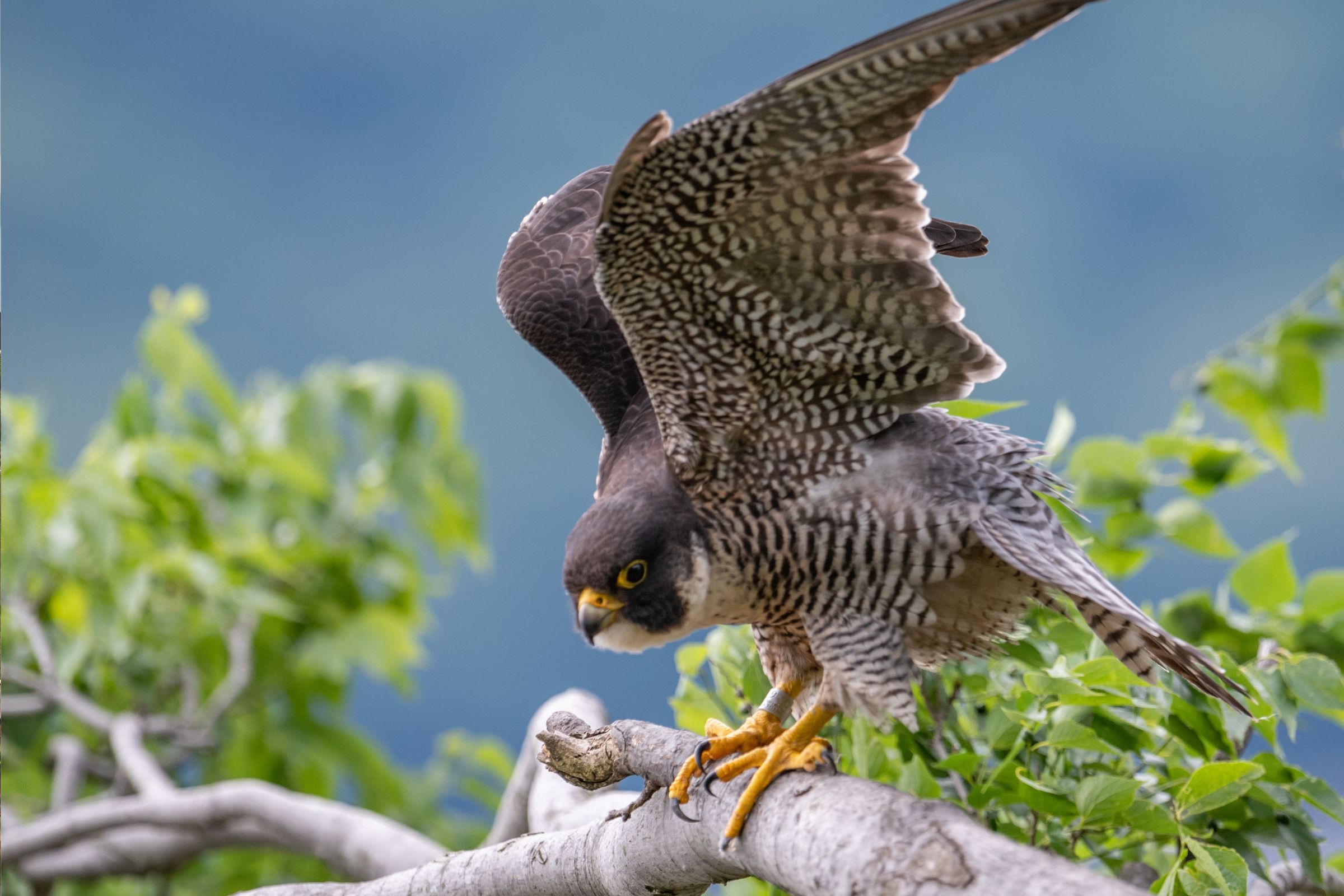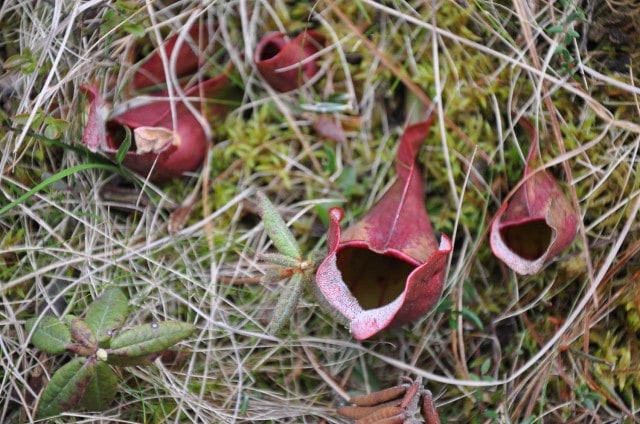A walk through the boreal forests of the Adirondack Parks places you in the midst of an avian symphony – a grouse plays the low notes, drumming on a log, and the warblers carry the melody.
But spotting individual warblers is no easy feat. On a spring walk along trails at the Paul Smith’s College Visitor Interpretive Center, our warbler tally included: a Wood Warbler, a Magnolia Warbler, a Black-Throated Blue Warbler, and a Palm Warbler. Identifying these individual warblers, or even the distinctive drumming of the grouse, would have been impossible without our guide, expert naturalist and field ornithologist, Alan Belford.
We met Alan Belford at the Paul Smiths VIC early one morning, having previously arranged this birding adventure through the Concierge & Guest Experience Program at High Peaks Resort.
Alan led us on an easy hike over level, well-maintained trails, stopping every few minutes to listen closely before directing our gaze to one bird or another and pointing out the identifying markings in a field guide.
Even with his expert guidance, I found it difficult to isolate one bird song from another. I asked Alan about how he got started. He said it took him a couple of years to begin to learn to identify bird songs, and for our area, he recommended listening to Stokes Field Guide to Bird Songs: Eastern Region by Donald Stokes, Lillian Stokes, and Lang Elliot.
If I could, I would bring an expert naturalist along on every hike. Alan not only pointed out the birds, but he also helped us identify much of the flora and fauna along the way while sharing fascinating factoids. Did you know that red-spotted newts can live 15-20 years? That was a surprise to us. And my son was impressed when Alan showed us the carnivorous pitcher plants edging the boardwalk through the bog.
Learning about the birds and plants in the Adirondacks was interesting, but even better, for a little while, we stopped talking and just listened to nature.
What birds are found in the Adirondacks?
The Adirondacks region in New York is known for its diverse birdlife that includes raptors as well as the boreal birds that make their home in the mountain forests. Here are some of the bird species that can be found in the Adirondack Mountains:
- Common Loon (Gavia immer): The Adirondacks are home to a significant population of Common Loons. These large, diving birds can be found on lakes and other bodies of water in the region.
- Bald Eagle (Haliaeetus leucocephalus): The Adirondacks provide a habitat for the majestic Bald Eagle. These raptors can be seen soaring over lakes and rivers, hunting for fish.
- Peregrine Falcon (Falco peregrinus): The Adirondack Mountains are known for their steep cliffs, which offer prime nesting sites for Peregrine Falcons. These swift and powerful birds of prey can be observed in the region.
- Boreal Chickadee (Poecile hudsonicus): The boreal forests of the Adirondacks are home to the Boreal Chickadee. This small songbird has a distinct call and is well-adapted to the cold northern climate.
- Black-capped Chickadee (Poecile atricapillus): Another common chickadee species found in the Adirondacks is the Black-capped Chickadee. These charismatic birds are known for their acrobatic behavior and can be spotted in various habitats.
- Ruby-throated Hummingbird (Archilochus colubris): The Adirondacks provide a summer home for the Ruby-throated Hummingbird. These tiny birds, known for their iridescent feathers and swift flight, visit the region during their migration.
- Bicknell’s Thrush (Catharus bicknelli): The high-elevation spruce-fir forests of the Adirondacks are an important breeding ground for the rare Bicknell’s Thrush. This elusive bird has a beautiful song and is a sought-after sighting for bird enthusiasts.
- Yellow-bellied Sapsucker (Sphyrapicus varius): The Adirondacks offer suitable habitat for the Yellow-bellied Sapsucker, a woodpecker species. These birds create distinctive rows of small holes on tree trunks, which they use to extract sap and insects.
- Hermit Thrush (Catharus guttatus): The Hermit Thrush, known for its melodious song, can be found in the Adirondacks during the breeding season. They prefer forested areas and are often seen hopping on the ground, foraging for insects.
- Ruffed Grouse (Bonasa umbellus): The Adirondack Mountains are home to the Ruffed Grouse, a game bird known for its drumming display during mating season. These birds inhabit the forested areas of the region.
- Lincoln’s Sparrow: Lincoln’s Sparrow (Melospiza lincolnii) is a small songbird known for its subtle beauty, with streaked plumage and a distinct buff-colored breast. It is often found in dense shrubs and wet areas, particularly during its migration through the Adirondacks.
- Scarlet Tanager: The Scarlet Tanager (Piranga olivacea) is a striking songbird that stands out with its brilliant red plumage and contrasting black wings. These neotropical migrants make a striking appearance in the Adirondacks during the breeding season, often inhabiting deciduous forests.
- White-throated Sparrow: The White-throated Sparrow (Zonotrichia albicollis) is a medium-sized sparrow species known for its distinctive white throat and yellow lores. These birds have a beautiful, melodious song and are commonly found in the undergrowth of mixed forests, including those in the Adirondacks.
Please note that this is not an exhaustive list, and the Adirondacks host a wide range of other bird species as well. Birdwatching in the region can offer a rewarding experience with the opportunity to spot numerous avian species.
Regenerate response
For more information to plan and book your family adventure and stay at High Peaks Resort, visit High Peaks Resorts.
Special thanks to High Peaks Resorts who hosted our stay in Lake Placid and arranged this birding adventure.
Family Fun in the Adirondacks
- Dig This! Rockhounding in New York
- Day Trip to the Adirondack Museum (Blue Mountain Lake)



